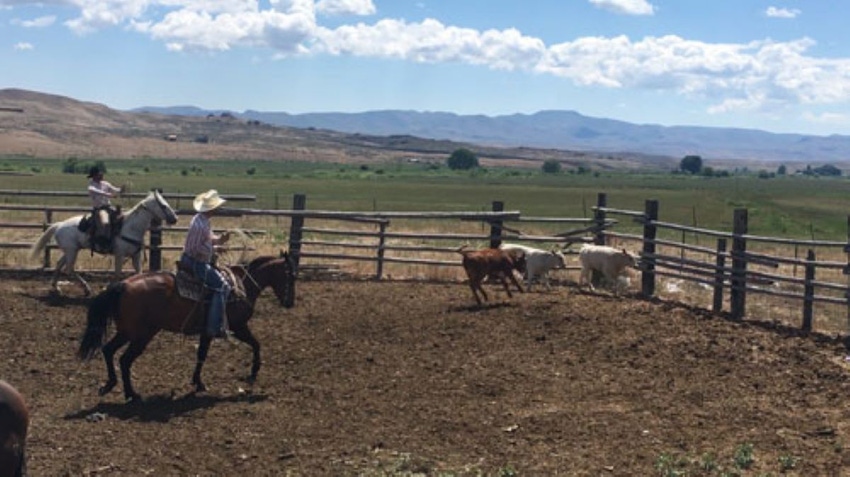Preliminary extension research sheds light on calf stress during branding.
December 23, 2019

On cattle ranches, branding time traditionally is when ranchers mark ownership of calves, including vaccinations, dehorning and castration of non-breeding male calves.
Oregon State University assistant professor and extension specialist Chris Schachtschneider recently posted that until recent years, ranchers roped calves to capture and restrain them while they were branded, but the squeeze chute and calf table drastically changed how livestock are handled.
He said this has started a debate about whether the calf table or roping is better at branding time. However, there was no empirical evaluation of these practices to settle the debate.
A team of researchers — Oregon State University assistant professor and extension livestock specialist Sergio Arispe, Wade Black and Jared Higby from Treasure Valley Community College and Schachtschneider — decided to shed some scientific light on the subject.
The team evaluated cortisol levels in 48 calves across four of the most common restraint methods, Schachtschneider said. They chose to test for cortisol because it is known as the “stress hormone”; its levels in the body indicate the discomfort of an individual animal.
The researchers took blood samples a week before branding and then sorted cow/calf pairs into four treatment groups.
In three of the groups, cows and calves were separated with three capture-and-restraint methods: calf table, heel-only roping and head-and-heel roping. In the fourth group, calves and cows were kept bunched together in the rodear, and calves were roped out of the rodear with head-and-heel roping, as was traditionally done before corrals became prominent.
Schachtschneider said it is important to note that the handling crew was the same throughout the study to minimize handler bias.
All of the calves in this study were captured and properly restrained before they were branded with a hot iron, vaccinated, castrated and disbudded, after which a second round of blood samples was collected and processed at Texas A&M University, Schachtschneider said.
According to Schachtschneider, post-branding cortisol levels in calves almost doubled in the three groups in which they were separated from their mothers, while post-branding cortisol levels were lower in the calves that stayed together with their mothers.
"Our findings suggest that the physical act of branding, vaccinations, castration or disbudding is not as stressful to calves as the separation from their mother. We know that livestock have evolved to tolerate pain in order to escape predators, even after being bitten, cut or scratched, but the psychological stress of separation on calves of this size is not something that occurs in nature, and so we see the elevated cortisol levels in all of the separated groups," Schachtschneider said.
He concluded that the research team observed two major findings: (1) roping does not inherently cause more stress for cattle, and (2) if calves need to be separated, the quicker they can be rejoined with their mother, the better.
The study was funded with a $12,500 grant from the Agricultural Research Foundation.
You May Also Like



